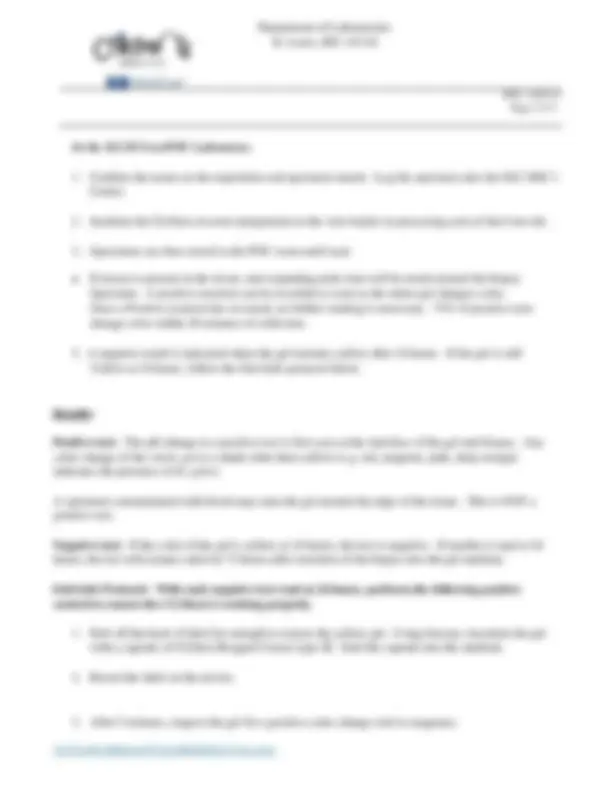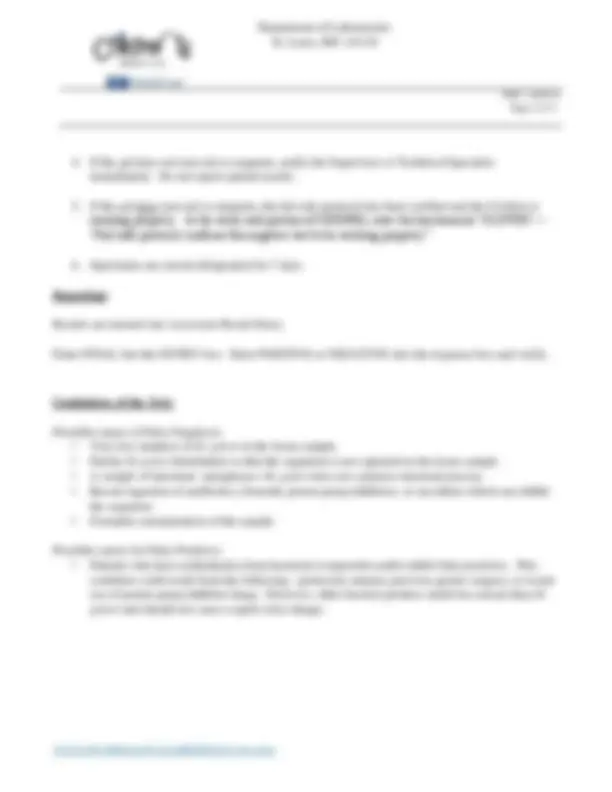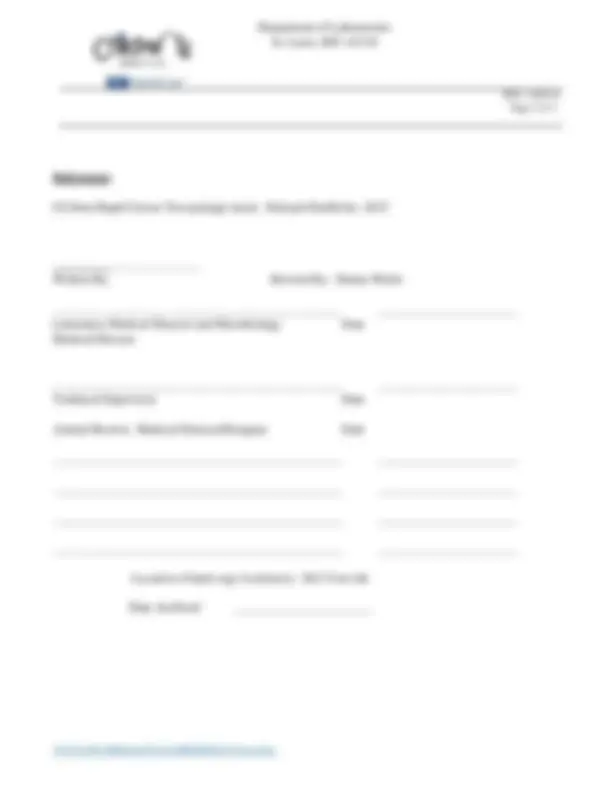





Study with the several resources on Docsity

Earn points by helping other students or get them with a premium plan


Prepare for your exams
Study with the several resources on Docsity

Earn points to download
Earn points by helping other students or get them with a premium plan
Community
Ask the community for help and clear up your study doubts
Discover the best universities in your country according to Docsity users
Free resources
Download our free guides on studying techniques, anxiety management strategies, and thesis advice from Docsity tutors
The CLO Test procedure for detecting Helicobacter pylori infection using the CLOtest Rapid Urease Test. the principle of the test, specimen collection, materials, quality control, and procedure for performing the test in the laboratory. It also includes information on expected results, limitations of the test, and references.
What you will learn
Typology: Study notes
1 / 5

This page cannot be seen from the preview
Don't miss anything!




St. Louis, MO 63110
POC.1.0263. Page 1 of 5
ISSUE DATE: October 2003 REVISION DATE: August 2005, October 2007, January 2010, July 2015, June 2017
REVIEW DATE: June 2018
Principle:
The CLOtest rapid urease test accurately and conveniently detects the urease enzyme of Helicobacter pylori in gastric mucosal biopsies. Its use is intended for the presumptive diagnosis of H. pylori infection.
H. pylori was first cultured from antral biopsies in 1982 and was originally called Campylobacter-like organism. Subsequently, the genus was named Helicobacter , meaning spiral or helical bacteria.
CLOtest is a well of urease indicator gel sealed inside a plastic slide. The gel contains urea, phenol red, buffers and a bacteriostatic agent to prevent the growth of contaminating urease-positive organisms. If the urease from H. pylori is present in the tissue sample, it changes the gel from yellow to bright magenta.
Specimen:
Specimens are collected in the Ambulatory Procedure Center, SDS, OR or the CSCC. The recommended gastric area to biopsy is at least 2 cm away from the pylorus along the lesser or greater curve of the antrum. Tissue should be excised that appears normal. Avoid tissue that is eroded or ulcerated as H. pylori may be present in smaller numbers around those areas. The patient should discontinue the use of antibiotics and bismuth preparations three weeks before the biopsy. These agents may suppress but not eradicate the presence of H. pylori making the organism difficult to detect by any means.
Materials:
2-3mm tissue sample obtained by endoscopist CLOtest device stored at 2 - 8°C CLOtest Reagent Urease Type III Forceps
St. Louis, MO 63110
POC.1.0263. Page 2 of 5
Quality Control:
Quality control must be performed on all new shipments and new lot numbers of the CLOtest. The lot number, expiration date and QC results will be documented on the CLO test Quality Control form in the Microbiology Lab. Two slides are removed from the package and allowed to come to room temperature. Inoculate one gel with one capsule of the CLOtest Reagent Urease Type III and leave the other gel uninoculated to serve as the negative control. Incubate at room temperature for 24 hours. Interpret and record results after 24 hours.
If expected results are not obtained, notified Technical Supervisor or designee.
Procedure:
Ambulatory Procedure Center/SDS/OR/CSCC
St. Louis, MO 63110
POC.1.0263. Page 4 of 5
Reporting:
Results are entered into Accession Result Entry.
Enter FINAL into the ENTRY box. Enter POSITIVE or NEGATIVE into the response box and verify.
Limitations of the Test:
Possible causes of False Negatives:
Possible causes for False Positives:
St. Louis, MO 63110
POC.1.0263. Page 5 of 5
References:
CLOtest Rapid Urease Test package insert. Halyard Health Inc. 2015
Written By: Revised By: Donna Walck
Laboratory Medical Director and Microbiology Date Medical Director
Technical Supervisor Date
Annual Review: Medical Director/Designee Date
Location of hard copy location(s): SLC Core lab
Date Archived: _______________________